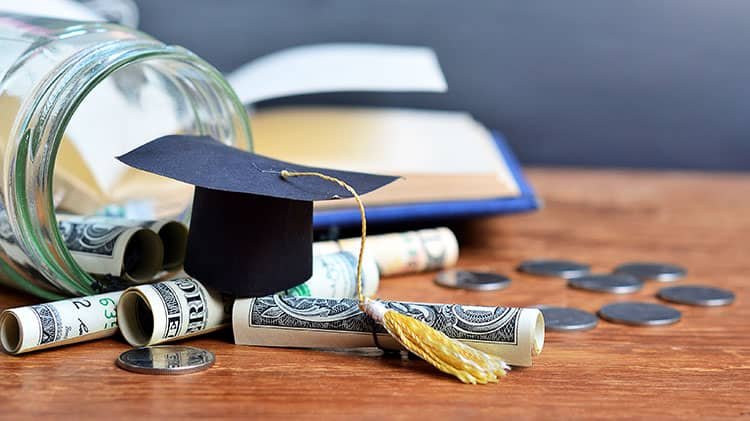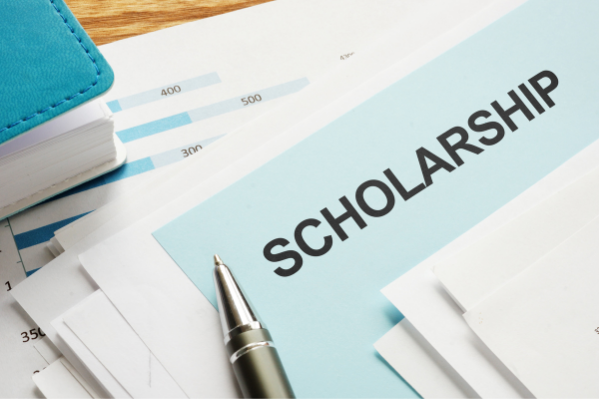Check out Part One of this article regarding the recent ruling on LGBTQ+ discrimination by the Supreme Court.
The Supreme Court invalidated affirmative action, permitted discrimination against LGBTQ+ people, and prohibited the Biden administration’s intention to cancel student loans in the final days of June. Many people are devastated and afraid for the future as a result of these historic verdicts, which directly affect people of colour, LGBTQ people, aspiring students, and the 43 million Americans who would have received some relief from their student debt.
We’re breaking down how these Supreme Court rulings will impact you and what you can do about it in our series on the consequences. Experts discuss the two Supreme Court judgements that have an impact on students in this explainer: the court’s findings against affirmative action and the forgiveness of student loans.
As a prospective or existing student, what information is essential to have? What effects will these choices have on diversity and socioeconomic mobility in higher education, the workforce, and society at large? In light of these verdicts, which have been heartbreaking news for many, how can you empower yourself?
Standing in front of a gathered audience at the community space Manny’s in San Francisco was the panel:
Courtney Liss is an associate at Keker, Van Nest and Peters, a San Francisco law firm, and Cody Harris is a partner there.
Matthew Coles, UC Law SF (previously UC Hastings) practice professor
June 29: Affirmative action policies in college admissions are overturned by the Supreme Court
The Supreme Court ruled in Students for Fair Admissions, Inc. v. President and Fellows of Harvard College that race could not be taken into consideration when making admissions decisions. The race of an applicant can no longer be one of several considerations used by colleges and admissions to determine who gets admitted.
The conservative majority on the court essentially reversed decisions that went back 45 years, overturning admissions policies at the oldest private and public universities in the country, Harvard and University of North Carolina, respectively.
Chief Justice John Roberts stated that the nation’s colleges and universities must utilise colorblind admissions criteria in his ruling for the court majority. The Supreme Court’s first Black female justice, Justice Ketanji Brown Jackson, stated in her dissent that the majority “pulls the ripcord and announces ‘colorblindness for all’ by legal fiat” and that this was done “with let-them-eat-cake obliviousness.” However, this does not mean that race is unimportant in life. Learn more about NPR’s affirmative action verdict.
What potential students should be aware of these modifications
According to San Francisco attorney Courtney Liss, “you can technically still write about diversity in your main essay as long as you are discussing how it individually strengthens your application.”
Using her own experience as an example, Liss said she might state in her application essay that having an immigrant mother who didn’t know how to negotiate social systems as a child inspired her to pursue law school. Yet, Liss continued, college admissions authorities now need to take into account the question, “Did my race impact me personally in being braver?”
“They cannot claim that having non-English speaking parents is inherently difficult. Even yet, it’s frequently quite difficult,” Liss remarked.
Behind this case, who is it?
Edward Blum, a conservative activist and the founder of Students for Fair Admissions, filed the affirmative action lawsuits against both colleges in 2014. The group argued that racial discrimination in college admissions is prohibited by the Constitution and demanded the reversal of previous rulings by the Supreme Court that contradicted this.
Asian American students were specifically targeted by the schools, according to the lawsuit filed by Students for Fair Admissions. Being the first person in her family to attend college, Liss stated that she felt this case to be “really tragic” since it represented how she perceived the Asian American community being “pitted against or used against, like as a wedge, in the broader community of colour.”
“So many of which are so far removed from this lawsuit,” she said, pointing out the diversity of Asian American experiences. She also mentioned how the idea that “Asians are harmed by affirmative action practices” is predicated on the idea that the group is a monolith.
The current implications of this decision for society and students
When NPR examined campuses where affirmative action has already been discontinued in June, they discovered a sharp decline in the number of admissions of persons of colour, especially Black students.
One of these locations is the University of California, which was forbidden from using race as a criterion for admissions in 1996 after voters in the state approved a ballot initiative against affirmative action.
Following the June 29 ruling by the Supreme Court, Michael Drake, the President of UC, wrote that educational institutions would now need to “work much harder to identify and address the root causes of societal inequities that hinder diverse students in pursuing and achieving a higher education.” Drake stated that race would no longer be a factor in admissions decisions.
Abolition of affirmative action, according to Liss, will not only hinder individuals but also society as a whole.
“When there are fewer students of colour in college, there are also fewer students of colour in medical school and among doctors. Already, our nation has some of the greatest rates of maternal death, particularly for Black women,” Liss remarked.
“This only strengthens the pipeline for white students, against the interests of students of colour. We live in a country where there are so few CEOs of colour,” the speaker stated.
June 30: Biden’s student loan forgiveness programme is overturned by the Supreme Court
The Supreme Court essentially put an end to the White House’s $400 billion plan to forgive or lessen the debt incurred by millions of Americans from federal student loans when it ruled against the Biden administration in the case of Biden v. Nebraska.
The Biden administration overreached itself with the scheme, according to the 6-3 ruling, which had conservative justices in the majority. It also left borrowers responsible for repayments that are anticipated to start up again in the autumn.
43 million Americans would have had their federal student loans forgiven up to $20,000 under Biden’s loan forgiveness scheme. Twenty million of them would have had all of their outstanding school loans forgiven.
How prospective students would be impacted by the student loans case
Liss stated: “A lot of students like me, and like a lot of other people, won’t go [to college]… or they won’t be able to afford to go.” in response to the practical effect of this ruling on student loans. Without a doubt, this choice would “disproportionately affect people of colour and people from other underrepresented backgrounds,” the speaker claimed.
Liss voiced serious concerns about how the choice could alter “the shape of their lives” for those students who would still need to take out enormous student loans in order to attend college because of the tremendous amount of debt they would incur.
Liss called it “really f—— sad” that so many grads would now be prevented from pursuing careers in which they couldn’t afford to, including “students who might be future doctors, lawyers, or legislators.”
Liss remarked, “My education has been like a door—not just for me, but for my whole family.” “And it feels like someone is slamming that door shut in their faces.”
In light of this decision, what is the future of student loan forgiveness?
Following the Supreme Court’s ruling, Biden declared he would move forward with a fresh plan to help millions of borrowers with their student loans while accusing Republicans of “hypocrisy” for bringing about the ruling that nullified his initial proposal.
In October, your student loan repayment obligations will recommence, if you have any. However, Biden stated that he will be working within the Higher Education Act’s jurisdiction to launch a new programme in the upcoming weeks that will lessen the risk of default for students should they fall behind over the course of the following year. Learn more about the White House’s intentions to waive student loans in the wake of the Supreme Court decision.
Billed as “a student loan safety net,” Biden’s SAVE Plan would also enable millions of Americans who have student loans to sign up for a new repayment plan with some of the most forgiving terms ever.
As long as borrowers make their regular payments, interest will not accrue. Millions of people will see their monthly bills cut to nothing. And any outstanding debt will be forgiven in as little as ten years. All Direct Loan Programme borrowers who are in good standing will be eligible for the SAVE Plan, according to the Education Department, and they will be informed when the new application procedure opens this summer. Study up on the SAVE Plan.
Furthermore, regardless of the recent ruling by the Supreme Court, over 800,000 federal student loan borrowers will still have their debts automatically forgiven as part of a one-time “account adjustment” for those borrowers who were directly impacted by the controversial income-driven repayment (IDR) plans implemented by the White House.
The Biden administration’s 2022 commitment to assist these borrowers, which followed numerous complaints, legal actions, and an NPR investigation into IDR plans exposing mishandling by the department and loan servicers, is what led to this targeted student debt forgiveness. Learn more about these borrowers’ access to student loan forgiveness through IDR plans.
Addressing more inquiries on the Supreme Court
Why it’s crucial to discuss Supreme Court decisions, especially when they have unpleasant content
Harris urged people to read Supreme Court rulings and educate themselves by locating and downloading them off the internet.
“They’re intimidating at first,” he said. “But as you read them, you get used to them,” the speaker continued, reassuring readers that they need not worry if they wish to “skip the boring parts and kind of get to the guts.” Their ability to read the Supreme Court will eventually grow, according to Harris, and they’ll “get the feel for what these things are like.”
Why should you read cases from the Supreme Court yourself?
Harris said, “If we just leave these issues to people like us — lawyers, professors — that’s like giving away your birthright.” This region is a portion of the nation. This is covered in our government charter. These nine individuals, these lawyers in robes, are making many choices that have a direct impact on each and every one of us.
Might the Supreme Court be reconstituted?
Many have questioned whether the Supreme Court can ever be reformated in light of its recent decisions regarding affirmative action, student loan forgiveness, discrimination against LGBTQ+ individuals, and the constitutional right to an abortion. The Court’s conservative supermajority is responsible for these decisions.
Is it possible that there is a court that is higher than the Supreme Court?
“The response is negative,” Harris affirmed. The Supreme Court is the only court established by the Constitution. There is just one justice, but it doesn’t specify how many must be present.
Does the public’s view matter to the Supreme Court?
The Court’s recent decisions, ranging from Dobbs in 2022 to affirmative action last month, have come under heavy fire and sparked numerous public demonstrations. Does the justices’ decision get affected by this dissent?
Maybe, Harris suggested, noting that the Supreme Court has always been “extremely conscious of its legitimacy — and its jealously guards it because it’s all it has.”
In contrast to the military-heavy executive branch of the US government, the Supreme Court “doesn’t have an army to enforce its rules and its rulings,” Harris emphasised. Therefore, “what they have is legitimacy — when they speak, everyone up to and including the President of the United States and the military [says] ‘OK, the court has spoken,'” despite the lack of that authority to execute its laws.
Harris stated, “That’s how you get what’s called a constitutional crisis” if that agreement were to ever fall apart.
Regarding the conservative justices, Matthew Coles stated, “I think they’re beginning to get sensitive to the notion that there’s wide, ever-growing public belief that some of what they’re doing is not legitimate.”
Tell us: What other information is needed.
At KQED News, we are aware that finding the solutions to problems pertaining to navigating the Bay Area in 2023 can occasionally be challenging. We’ve released concise, useful explanations and recommendations on COVID, how to handle severe winter weather, and safe ways to use your right to protest.
Tell us, then: What more information do you require? If you ask us, we might be able to provide you with an online or social media response. Your contributions will strengthen our reporting and assist us in selecting stories for both KQED Public Radio and this website.




